10 most nutrient-rich leafy greens you can grow
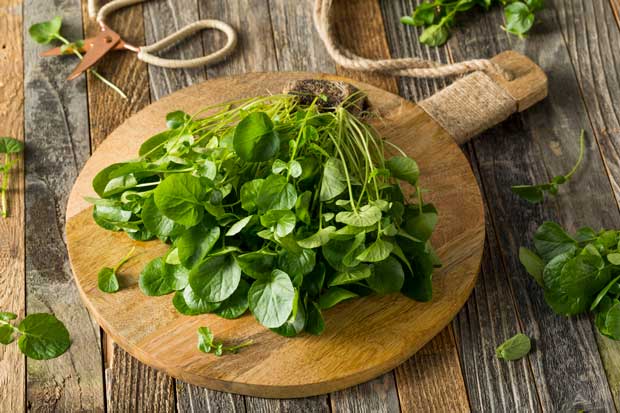
If you’re going to grow your salads, here are the 10 greens that make every bite as nutrient-rich as possible.
Words: Nadene Hall
Ask people what’s the most nutritious leafy green you can grow, and the common answer is kale.
But comprehensive research in the US shows it’s another member of the cruciferous family that top the charts: watercress. Kale comes in at number 15.
The research by the Center for Disease Control (CDC) looked at what it calls ‘powerhouse fruit and vegetables’ (PFV), the ones most strongly associated with reduced chronic disease risk. It developed a world-first classification for PFV, defining it as:
“Foods providing, on average, 10 percent or more daily value per 100kcal of 17 qualifying nutrients.”
The qualifying nutrients are of public health importance, as per guidelines from the Food & Agriculture Organisation (FAO) of the United Nations, and the Institute of Medicine. They are:
• potassium
• fibre
• protein
• calcium
• iron
• thiamine
• riboflavin
• niacin
• folate
• zinc
• vitamins A, B6, B12, C, D, E, K
The CDC looked at 47 fruits and vegetables and found 41 that reached the PFV classification, and six that didn’t (raspberries, tangerines, cranberries, garlic, onions, blueberries). Researcher Jennifer Di Noia says that’s because their health benefits are due in part to the presence of phytochemicals, which isn’t included in the calculations.
Cruciferous
Plants do well in colder weather, have flowers that resemble a cross (cruciferous = crucify).
Edible part: the ‘flower’ or leaves
Famous family members: the Brassica family (broccoli, cauliflower, Brussels sprouts, Chinese cabbage, kale), watercress, rocket (arugula), radish, daikon, wasabi.
Leaf greens
Mostly short-lived herbaceous plants.
Edible part: leaves
Famous family members: leaf lettuce, chard, spinach, chicory.
10 most nutrient-rich greens
10. COLLARD GREENS
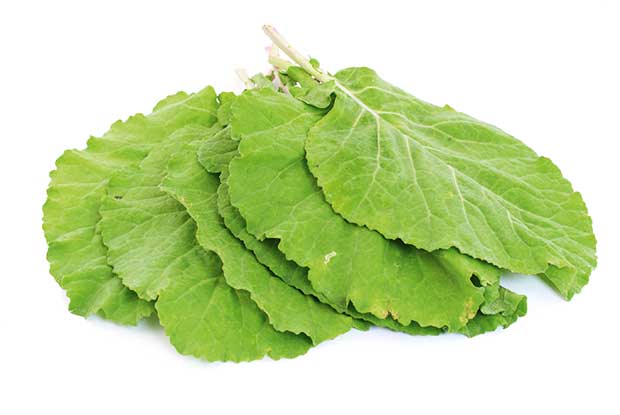
Powerhouse rating: 62.49
Type: cruciferous, loose leafed
When to sow: late summer-early autumn
When to transplant: 2-4 weeks after germination
Harvest: 8-11 weeks after sowing
Flavour: mild when young, sweeter if picked after a frost, younger leaves are a more palatable texture
How to use in the kitchen: finely chopped in a salad, smoothies, stir fry, bake
Growing tip: Collards like cool weather; leaves tend to be bitter if growing through summer. Plant in a shady spot if you want an early summer crop. Collards are best sown in February-March for winter harvest.
9. ROMAINE (COS)
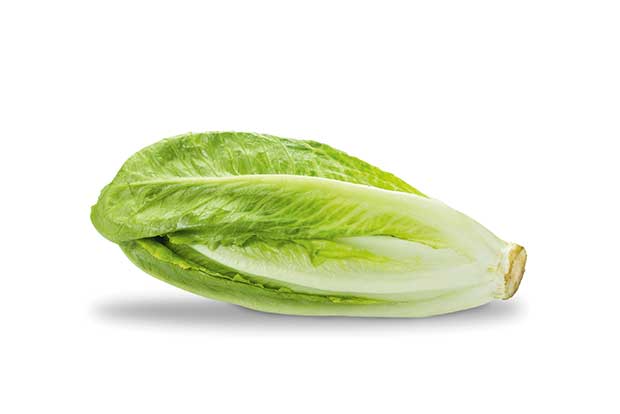
Powerhouse rating: 63.48
Type: Leaf green
Varieties to try: Parris Island (for traditional Caesar salad), Baby Caesar
When to sow: direct, early spring-early summer, late summer-early autumn
Harvest: 45 days from sowing
Flavour: crisp, juicy, strong, slightly bitter in older leaves
How to use in the kitchen: fresh, most popularly used for Caesar salad, sauté, grill
Growing tip: Romaines/cos are good at withstanding hot, dry conditions. Green varieties are better for summer growing than reds, which tend to bolt.
8. PARSLEY
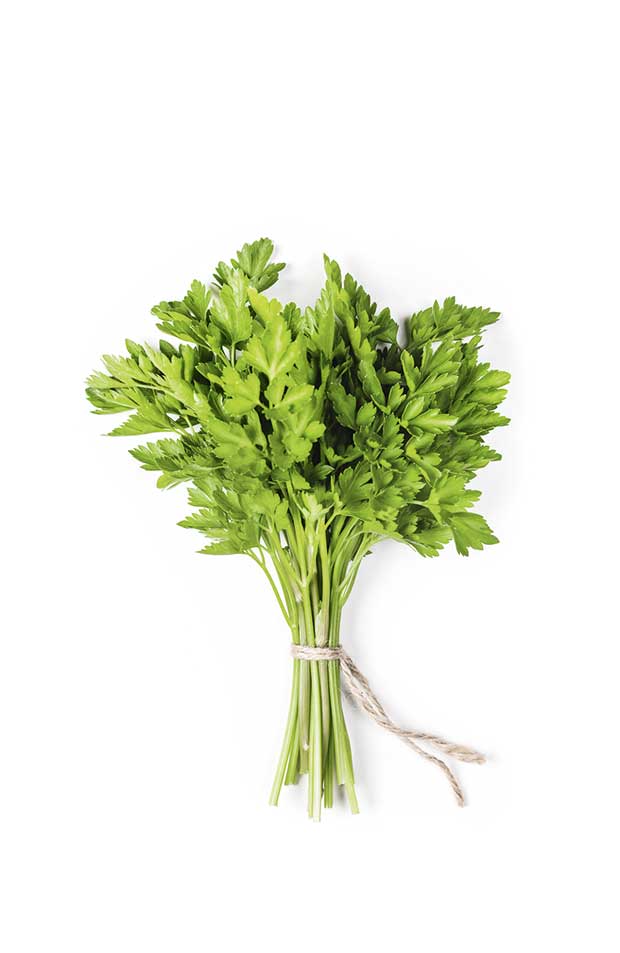
Powerhouse rating: 65.59
Type: biennial herb, sometimes annual depending on climate
Variety to try: Gigante Italian (juicy, great for salads)
When to sow: early spring-early summer, late summer-early autumn
When to transplant: when plants are large enough to be handled
Harvest: 11-16 weeks+, depending on the variety
Flavour: fresh, slightly bitter
How to use: fresh in salad, as a garnish
Growing tip: Parsley can be very slow to germinate, from 14-21 days. If you’re impatient, it can be easier to buy seedlings. When you handle transplants, be careful not to disturb the roots, or it will flower prematurely.
7. LEAF LETTUCE

Powerhouse rating: 70.73
Type: leaf green, lettuce varieties that don’t produce a ball-shaped ‘head’
Varieties to try: Royal Oak Leaf (more heat tolerant than standard oak leaf, but grows in shade in summer), Drunken Woman Fringed Head, Lollo Rossa
When to sow: direct, early spring-early summer, late summer-early autumn
Harvest: 50-60 days from sowing, depending on the variety
Flavour: delicate taste, soft, tender leaves
How to use: fresh in salad
Growing tip: Leaf lettuce can be repeatedly harvested – just cut a few leaves at a time, and the plant will regrow. Ensure it has plenty of feed and water – water the soil, not over the leaves, to avoid disease.
6. CHICORY (RADICCHIO)
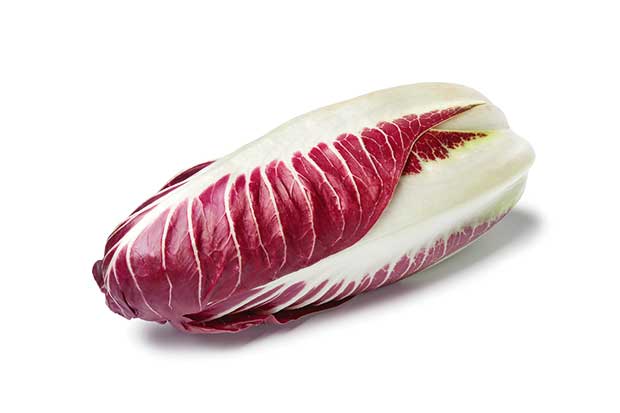
Powerhouse rating: 73.36
Type: leaf green, biennial
Variety to try: Red Treviso Early (green-leaved during summer, turns dark red when temperatures cool)
When to sow: late spring-early summer, late summer-early autumn
When to transplant: 5-6 weeks after sowing
Harvest: when young, 6-10 weeks depending on the variety
Flavour: bitter, crunchy, leaves go very bitter if harvested too large/late
How to use: fresh in salad, sauté, stir fry, bake
Growing tip: Chicory tastes best when harvested during cooler temperatures. Ideally, time the sowing of plants, so they’re ready in autumn-early winter.
5. SPINACH
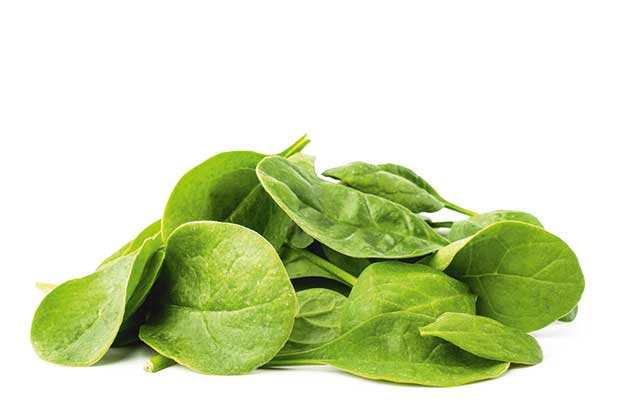
Powerhouse rating: 86.43
Type: leaf green
Variety to try: Baby Boom (small-leafed variety, slow to bolt)
When to sow: direct, early spring-early summer, late summer-early autumn
Harvest: 30-40 days from sowing, depending on the variety
Flavour: light, earthy
How to use: fresh in salad, sauté, steam, boil, bake
Growing tip: Sow spinach every 2-3 weeks to maintain a continuous supply from early summer to late autumn.
4. BEET GREENS
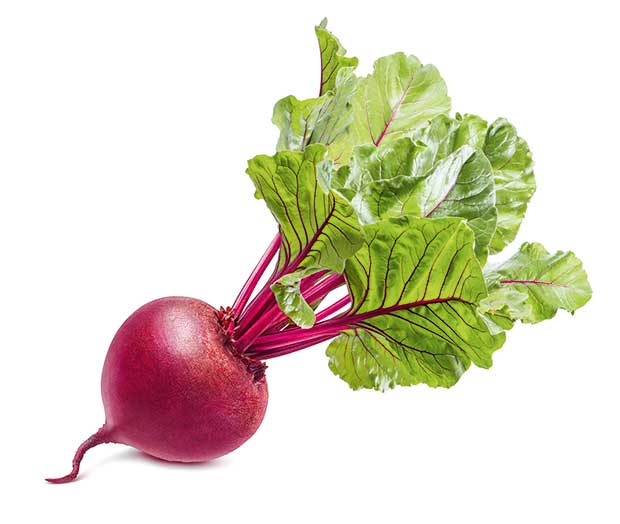
Powerhouse rating: 87.08
Type: leaf green, tops from beetroot plants, the same family as chard
Variety to try: Detroit Dark Red (globe-shaped beetroot, plus beautiful red-veined leaves)
When to sow: direct, early spring-early autumn
Harvest: baby leaves 35 days, roots 55 days, from sowing
Flavour: strong, similar to chard, but sweeter
How to use: finely chopped fresh in salad, sauté, bake
Growing tip: Only harvest 1-2 leaves per plant if you still want to harvest the root.
3. CHARD
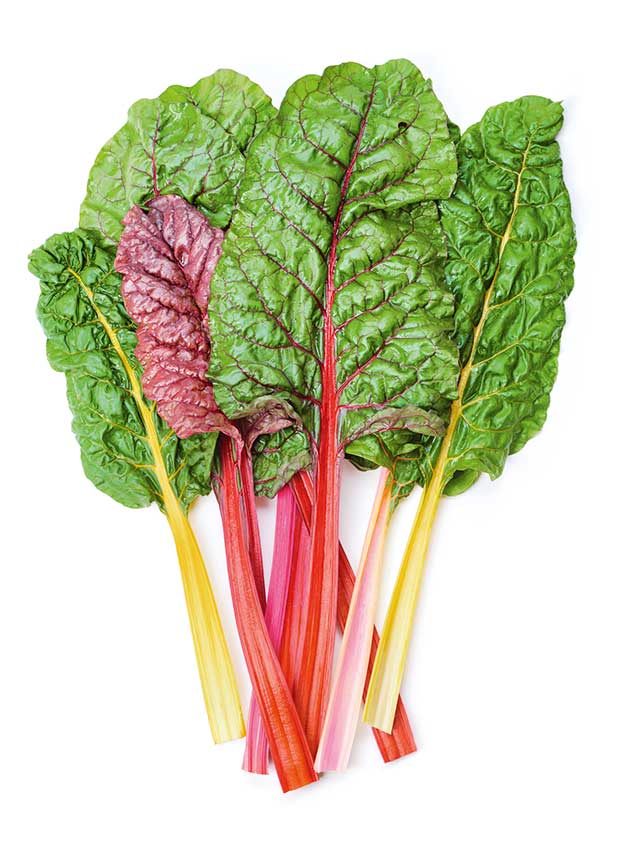
Powerhouse rating: 89.27
Type: leaf green, includes silverbeet
Variety to try: Cardinal (deep crimson ruffled leaves, red stalks, cut for baby leaves at 30 days)
When to sow: direct, early spring-early autumn
Harvest: 30 days for baby leaves, 55 days for mature leaves
Flavour: mild, nutty, may be slightly bitter
How to use: fresh in salads, sauté, steam, boil, bake
Growing tip: Keep plants well-watered through summer, or it tends to bolt.
2. CHINESE CABBAGE (WONG BOK)
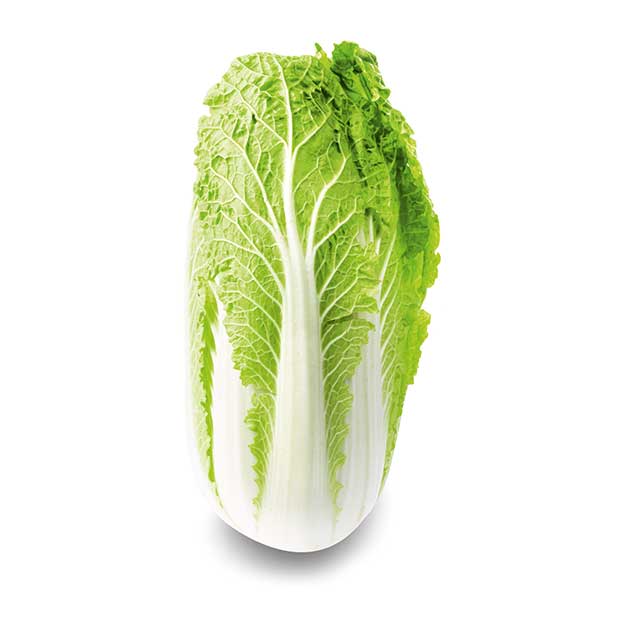
Powerhouse rating: 91.99
Type: cruciferous
Variety to try: Wa Wa Tsai (mini size, sweet flavour, fast-growing)
When to sow: early spring-early summer, early autumn, depending on variety
When to transplant: 3-5 weeks from sowing
Harvest: 55-60+ days from transplant, depending on the variety
Flavour: sweeter, more tender than green or red cabbage
How to use: fresh in salad, soups, stir fry
Growing tip: Chinese cabbage can easily bolt in hot weather. Most varieties do best when planted in early spring or early autumn (sow 4-6 weeks ahead), and need good levels of moisture to grow fast – if grown too slowly, they can bolt.
1. WATERCRESS
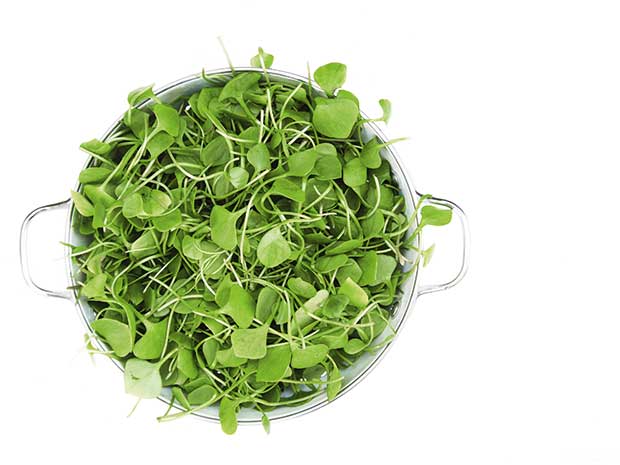
Powerhouse rating: 100
Type: cruciferous
When to sow: late summer-early autumn
When to transplant: when plants are 5-10cm high
Harvest: 60 days from sowing, prune any flowering stems, leave each plant for a week before harvesting from it again, will keep regrowing from May-December
Flavour: tangy, peppery
How to use: fresh in salads, smoothies, steamed, stir fry
Growing tips:
• you get the best flavour growing watercress in water – in soil it can get too strong. If soil is your only option, keep it very moist and have the plants in the shade.
• sow seed in pots, or you can germinate it on a windowsill on damp tissue paper., then pot it up. Transfer pots into a bucket, trough, or bathtub. Change the water weekly in a small container; some people keep a tap dripping into larger containers.
ANOTHER NUTRIENT-RICH WINNER
Microgreens are thickly-sown trays of vegetables, harvested 7-14 days or so after germination when plants are just 2.5-5cm high. Research on 25 different plants shows microgreens can contain four to 40 times more nutrients than the mature plant. They are best eaten raw, in small amounts, after washing to remove any dirt.
Source: www.researchgate.net/publication/267354000_Microgreens_Assessment_of_Nutrient_Concentrations
POWERHOUSE FRUITS & VEGETABLES BY RANKING OF NUTRIENT DENSITY SCORES*
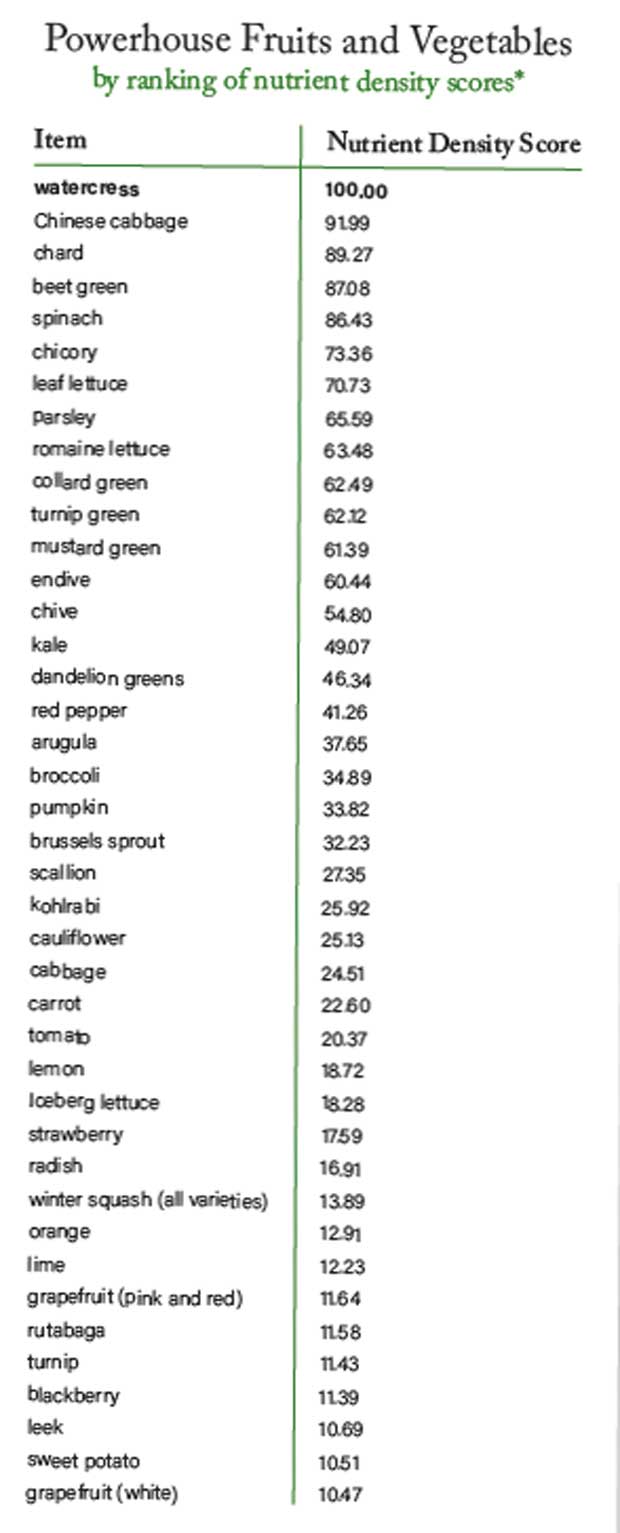
*Calculated as the mean of percent daily values (DVs) (based on a 2,000 kcal/d diet) for 17 nutrients (potassium, fibre, protein, calcium, iron, thiamine, riboflavin, niacin, folate, zinc, vitamins A, B6, B12, C, D, E, and K) as provided by 100g of food, expressed per 100kcal of food. Scores above 100 were capped at 100 (indicating that the food provides, on average, 100% DV of the qualifying nutrients per 100 kcal).
Source: Noia J. Defining Powerhouse Fruits and Vegetables: A Nutrient Density Approach (2014). www.cdc.gov/pcd/issues/2014/13_0390.htm
Love this story? Subscribe now!
 This article first appeared in NZ Lifestyle Block Magazine.
This article first appeared in NZ Lifestyle Block Magazine.
